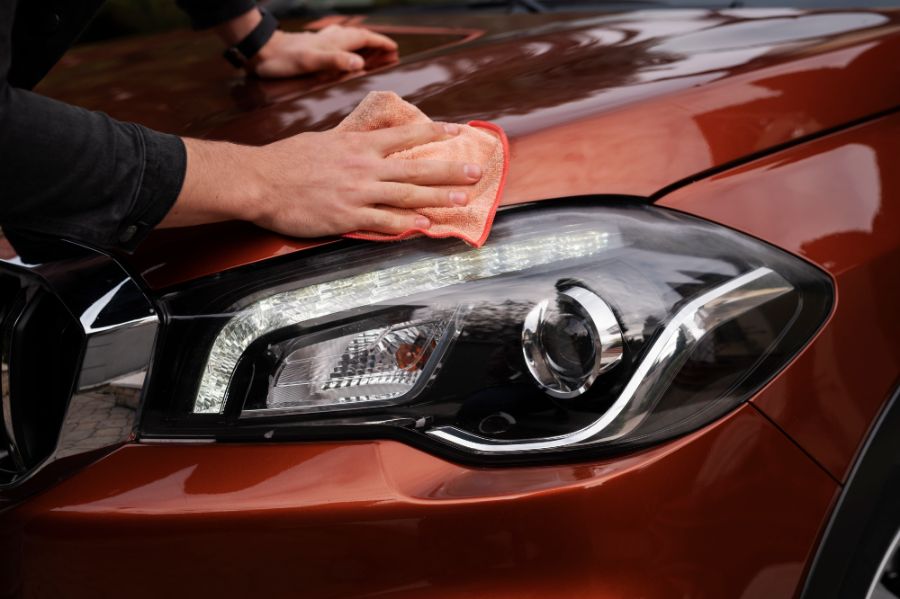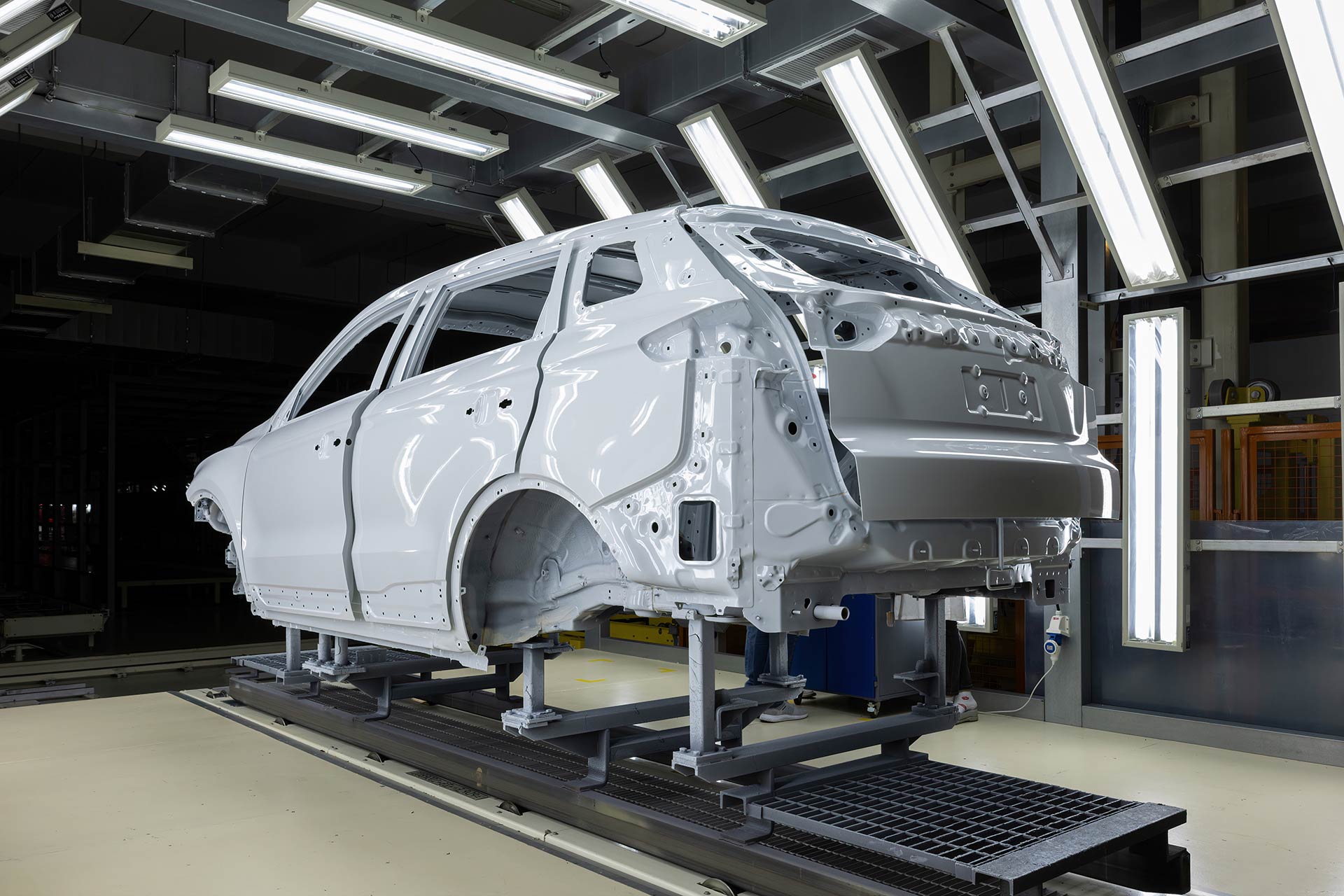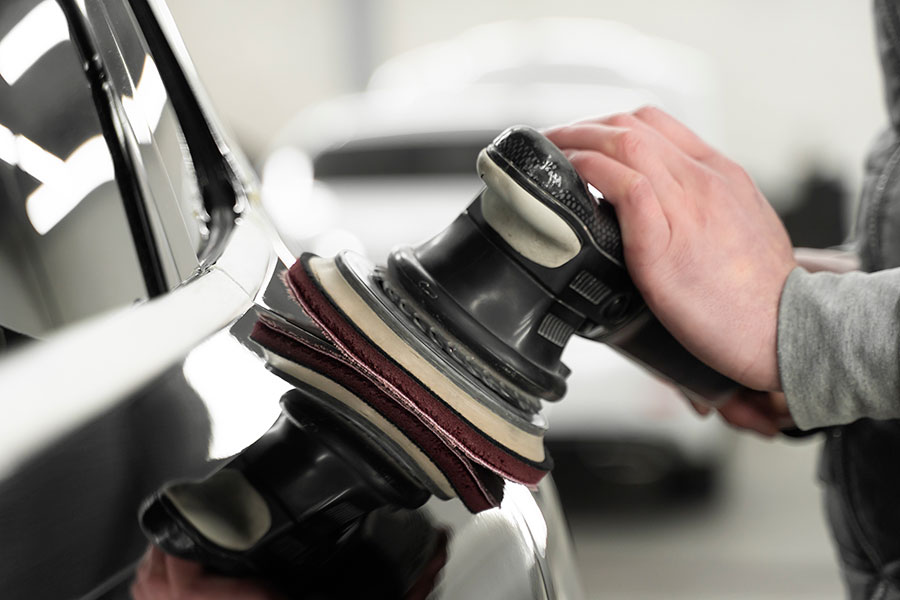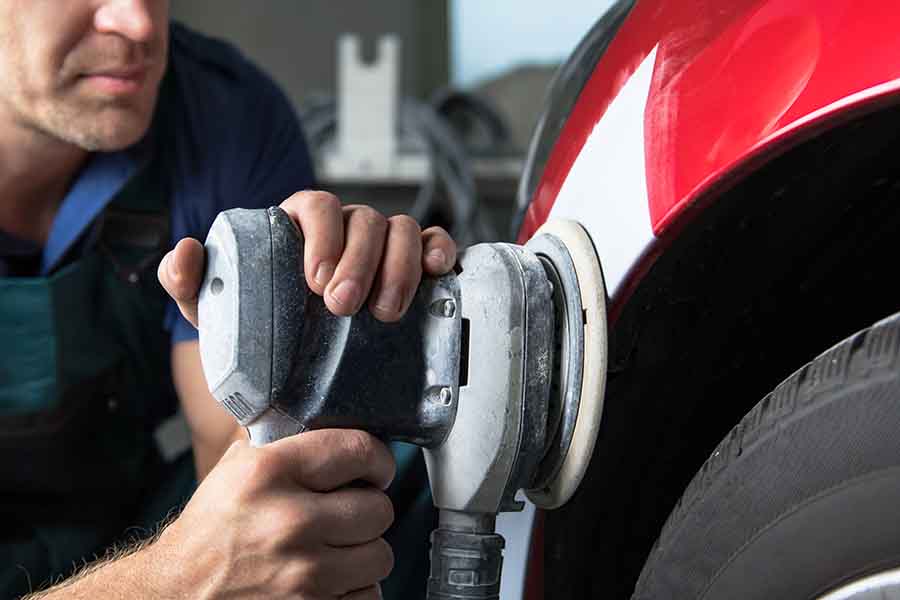Did you know that nearly 70% of car owners face the dilemma of choosing between original and aftermarket parts for their vehicle repairs? This choice is not just about cost but also impacts the longevity and performance of your car. Original parts, designed by the car's manufacturer, promise a perfect fit and reliability, but often come with a higher price tag. Aftermarket parts, on the other hand, offer a more affordable alternative without the brand-name markup, yet their compatibility and quality can vary widely. In this post, we'll dive deep into the pros and cons of original vs. aftermarket parts, helping you make an informed decision that balances quality with cost-effectiveness.
Understanding the Basics
OEM Parts
OEM stands for Original Equipment Manufacturer. These parts come directly from the vehicle's maker. They match what came with your car when it was new.
Buying OEM ensures the part fits perfectly and works as intended. Since they're made by the same company that built your vehicle, there's a guarantee of quality. However, this assurance often comes at a higher cost.
Aftermarket Parts
Aftermarket parts are produced by different companies, not the vehicle's original manufacturer. They offer a wider variety of options at lower prices.
These parts can be equal in quality to OEM parts or sometimes better. But, finding the perfect fit might require more effort. The broad selection means you have more freedom to choose based on price and quality.
Key Differences
The main differences between original and aftermarket parts lie in their manufacturing and branding.
OEM parts are created by the car's manufacturer or under its direct supervision. This guarantees a seamless fit and performance as they're designed specifically for your vehicle model. On the other hand, aftermarket parts are made by various manufacturers. They aim to match or exceed OEM specifications but may vary in fit and performance due to differences in manufacturing standards.
In terms of branding, OEM parts carry the vehicle manufacturer's logo, ensuring you're getting a part made specifically for your car. Aftermarket parts, however, come from a range of brands. This diversity means you'll need to do some research to find the best option for your needs.
Comparing Quality and Price
OEM Quality
OEM parts, or Original Equipment Manufacturer parts, are known for their consistent quality. They are the exact parts that come with your vehicle or equipment, made by the same manufacturer. This ensures a perfect fit and optimal performance. People trust OEM parts because they follow strict specifications set by the original manufacturer.
With OEM parts, you don't have to worry about the compatibility or the risk of damaging your vehicle. They often come with warranties, adding peace of mind. However, this high quality and reliability come at a cost. OEM parts are usually more expensive than aftermarket options.
Aftermarket Pricing
Aftermarket parts are made by different companies, not the original manufacturer. They can be much cheaper than OEM parts. This lower price makes them an attractive option for many people looking to save money on repairs or upgrades.
However, the quality of aftermarket parts can vary greatly. Some match or even exceed OEM standards, while others fall short. This inconsistency is why they're often cheaper. You have to do your research to ensure you're getting a good deal without sacrificing too much quality.
Quality Variance
The wide variance in quality among aftermarket parts affects both their price and value. High-quality aftermarket parts may cost more but provide better performance and longevity. On the other hand, lower-quality options might save you money upfront but could lead to more problems down the road.
It's crucial to consider both the initial cost and the potential long-term impact when choosing between OEM and aftermarket parts. Sometimes, paying a bit more for an OEM part can save you money and hassle in the future.
Price vs. Value
When comparing OEM and aftermarket parts, it's essential to look beyond just the price tag. Consider the total value of what you're getting. OEM parts offer reliability and peace of mind, which can be worth the extra cost for many people.
Aftermarket parts provide a range of options and prices, allowing you to find something that fits your budget. But remember, choosing the cheapest option isn't always the best decision in the long run.
Assessing Availability and Variety
Aftermarket Selection
Aftermarket parts boast a wider selection for various car models. They provide numerous options, catering to different needs and preferences. Whether it's for repair or enhancement, finding a compatible part is seldom an issue. This abundance allows car owners to shop around, compare prices, and choose based on quality or brand reputation.
They also shine in the realm of upgrades and customization. Enthusiasts seeking improved performance or a unique look often turn to aftermarket solutions. These parts can transform a vehicle, offering enhancements that OEM parts might not cover. From high-performance brakes to custom exhaust systems, the possibilities are vast.
OEM Simplicity
In contrast, OEM (Original Equipment Manufacturer) parts come with a straightforward choice. Their lack of variety simplifies the decision-making process. Car owners don't need to compare between dozens of options for a single part. This simplicity ensures that the selected part will fit and function as intended, without the need for modifications or adjustments.
The direct compatibility with the vehicle model eliminates guesswork. Each OEM part is designed specifically for certain models, ensuring a perfect fit every time. This aspect is crucial for those who prioritize reliability and want to maintain their vehicle's originality.
Customization Potential
Aftermarket parts stand out when it comes to customization. They offer endless possibilities to modify a vehicle's appearance, performance, and functionality. Owners can find parts that not only replace but also upgrade the existing components. These enhancements range from cosmetic changes like body kits and custom lighting to performance upgrades such as turbochargers and suspension kits.
This sector thrives on innovation, constantly introducing new technologies and designs. For car enthusiasts looking to create a unique vehicle that stands out or performs better than stock models, aftermarket parts are the go-to solution.
Exploring Warranty Differences
OEM Warranties
OEM parts, or Original Equipment Manufacturer parts, often come with a manufacturer’s warranty. This warranty acts as a promise from the manufacturer to repair or replace the part if it fails within a certain period.
Most OEM warranties last for at least one year. They provide peace of mind knowing that any defects will be handled without extra costs. However, the length and coverage of these warranties can vary significantly between manufacturers. It's crucial to check these details before making a purchase.
Aftermarket Warranties
Contrastingly, aftermarket parts may offer different warranty conditions. Some aftermarket companies provide warranties that match or exceed those of OEM parts. Yet, others might not offer any warranty at all.
The variability in warranty terms among aftermarket parts demands careful consideration. Shoppers should investigate the warranty specifics: its duration, what it covers, and the process for claiming it. This diligence ensures they are not left uncovered in case of part failure.
Warranty Importance
Understanding the warranty differences is key to making an informed decision between original and aftermarket parts. A longer warranty might indicate higher quality and reliability, offering more value in the long run.
Moreover, considering the warranty length and coverage is especially important when replacing critical components of a vehicle. For less vital parts, a shorter or non-existent warranty might be acceptable if the cost savings are significant.
Making the Right Choice
Assess Needs
Before rushing into a decision, it's crucial to evaluate what your vehicle truly requires. Not all parts are created equal, and sometimes, the allure of lower prices can cloud judgment. Original equipment manufacturer (OEM) parts guarantee a perfect fit and often come with a warranty that aftermarket parts may not offer. This is especially important for critical components that affect your car's safety and performance.
On the other hand, aftermarket parts offer a wider variety of choices and can be significantly less expensive. They might be the right choice for cosmetic upgrades or non-essential components. However, quality varies widely among manufacturers. It's essential to research and choose reputable brands to avoid compromising vehicle safety.
Seek Expert Advice
Navigating the vast world of car parts can be daunting. That's where professional guidance becomes invaluable. A trusted mechanic or automotive expert can provide insights based on experience with different brands and parts. They know which aftermarket brands offer reliability comparable to OEM parts and which ones to avoid.
Their advice can save you from making costly mistakes. For example, installing an inferior quality part might save money initially but could lead to more significant issues down the line, necessitating additional repairs.
Consider Long-Term Impact
The choice between original and aftermarket parts also has long-term implications for your vehicle’s performance and resale value. OEM parts maintain the integrity of your vehicle, keeping it as close to its original condition as possible. This is crucial if you plan on selling your vehicle in the future. Vehicles with OEM parts often fetch a higher price due to their guaranteed compatibility and reliability.
Aftermarket parts, while they can be cost-effective and enhance performance, may not always align with your vehicle's specifications, potentially affecting its functionality over time. Moreover, using aftermarket parts could void your warranty if not chosen carefully, leading to unexpected expenses should repairs be needed.
Finding Parts with Ease
OEM Availability
OEM parts, known for their perfect fit and quality, are typically found at authorized dealerships. They are the go-to for car owners looking to maintain the originality of their vehicles. These dealerships have direct access to parts designed specifically for your model, making the search straightforward.
Finding the right OEM part often starts with a visit to a dealership. Here, experts can help identify the exact component needed. The process is simplified for specific models, ensuring that the part not only fits but also matches the manufacturer's standards.
Aftermarket Sources
Aftermarket parts offer a different route, known for their variety and cost-effectiveness. These components are widely available through online marketplaces and auto parts stores. Such platforms provide an extensive range of options for nearly every car make and model.
Online shops and local stores are bustling with aftermarket solutions. They cater to diverse needs, from performance enhancements to cosmetic upgrades. Shoppers can compare prices and read reviews, aiding in informed decision-making.
VINs and Part Numbers
Both OEM and aftermarket searches are streamlined by using VINs (Vehicle Identification Numbers) and part numbers. These identifiers remove the guesswork, leading directly to compatible parts.
The VIN acts as a fingerprint for your vehicle, detailing its unique specs. When provided, dealerships or online sellers can pinpoint the exact OEM part required. Similarly, knowing the part number simplifies finding its aftermarket counterpart, ensuring compatibility.
Utilizing VINs and part numbers accelerates the search. It ensures that whether you opt for OEM or aftermarket, you get a precise match for your vehicle. This method is invaluable in saving time and avoiding returns due to incorrect orders.
When to Choose Original
Lease Returns
Leasing a car is like renting it. You need to keep it in good shape. When fixing it, choosing original equipment manufacturer (OEM) parts is wise. This keeps the car as it was when new. For lease returns, using OEM parts avoids extra fees. Dealers check cars closely when returned. They look for changes or non-original parts. Using original parts keeps the car's value and avoids penalties.
Returning a leased car with aftermarket parts can lead to charges. These might be for repair costs or decreased value. To avoid this, always use OEM parts for repairs during the lease.
Vehicle Authenticity
For classic or luxury cars, keeping them original is key. These cars are special because of their history and design. Using original parts keeps their authenticity. This is important for collectors and enthusiasts.
Original parts help maintain a car's true value and appeal. For classic cars, this means keeping them as close to how they were made. For luxury cars, it ensures they perform as intended by the maker.
Safety and Fit
Safety should always come first. With car parts, this means choosing OEM over aftermarket when safety is a concern. Original parts are made specifically for your car model. They fit perfectly and work as intended.
Aftermarket parts might not meet the same standards. They could fit poorly or not work as well with other car systems. This can lead to safety issues.
In situations where safety and precise fit are critical, OEM parts are the best choice. They ensure your car runs safely and efficiently.
Deciding on the Best Option
Cost Analysis
When choosing between original and aftermarket parts, cost is a major factor. Original parts often come with a higher price tag. They promise quality and compatibility. Aftermarket parts are generally less expensive. They offer a wider range of prices.
Original parts ensure a perfect fit and long-term reliability. This can save money over time. Aftermarket parts might not always match the vehicle's specifications perfectly. This could lead to additional costs down the line.
Quality Considerations
Quality is crucial when selecting parts for your vehicle. Original parts are made by the vehicle's manufacturer. They match the ones it came with. This guarantees that they will work exactly as intended.
Aftermarket parts vary widely in quality. Some may match or exceed the quality of original parts. Others might fall short. It's important to research and find reputable brands.
Availability and Variety
Original parts are always designed to fit their specific models. But, they may not be readily available at all times. Aftermarket parts offer a vast selection and are often more accessible.
The wide variety of aftermarket parts allows for customization. It also provides solutions when original parts are hard to find. However, this abundance of options can make it harder to choose the right part.
Vehicle Specifics
The decision between original and aftermarket parts depends on your vehicle's age, warranty status, and intended use. For newer vehicles under warranty, using original parts is often necessary to maintain the warranty.
For older vehicles, aftermarket parts can provide a cost-effective solution without compromising on performance. Consider how you use your vehicle. Daily drivers have different needs than performance or off-road vehicles.
Summary
Choosing between original and aftermarket parts boils down to your needs, budget, and preferences. Original parts offer peace of mind with guaranteed compatibility and warranty but at a higher price. Aftermarket options, on the other hand, provide a vast array of choices and better affordability, though quality can vary. You've seen how availability, price, quality, and warranties differ between these two options. Making the right choice involves weighing these factors against your personal or business priorities.
Now's the time to decide what's best for you. Whether it’s sticking with the reliability of original parts or exploring the cost-effective diversity of aftermarket alternatives, your decision should align with your goals. Don’t hesitate to reach out to experts or conduct thorough research to ensure your choice meets your expectations. Your vehicle deserves the best—make an informed decision today.
Frequently Asked Questions
What's the difference between original and aftermarket parts?
Original parts are made by the vehicle's manufacturer, ensuring a perfect fit and performance. Aftermarket parts are produced by other companies and may offer more variety and lower prices, but with varying quality.
Are aftermarket parts less expensive than original parts?
Yes, aftermarket parts are generally less expensive than original parts. They provide a cost-effective alternative, though quality and fit might not always match the standards of original parts.
Can using aftermarket parts void my car warranty?
Using aftermarket parts does not automatically void your car warranty. However, if an aftermarket part causes damage to your vehicle, the warranty claim related to that damage might be denied.
How do warranties compare between original and aftermarket parts?
Original parts typically come with a warranty that matches the vehicle's existing warranty, offering peace of mind. Aftermarket parts' warranties can vary widely, so it's important to check the specifics before purchasing.
Is it easy to find aftermarket parts?
Yes, aftermarket parts are widely available for most makes and models. Their availability and variety surpass that of original parts, making them a convenient choice for repairs and upgrades.
When should I choose original parts over aftermarket?
Choose original parts for critical components or when maintaining a vehicle in its authentic condition is important. Original parts guarantee compatibility and performance, ideal for preserving vehicle integrity and resale value.
How do I decide on the best option between original and aftermarket parts?
Consider factors like the part's role in your vehicle's operation, warranty implications, your budget, and whether quality or cost is your priority. For essential components or newer vehicles, leaning towards original parts might be wise; otherwise, aftermarket parts can offer good value.









